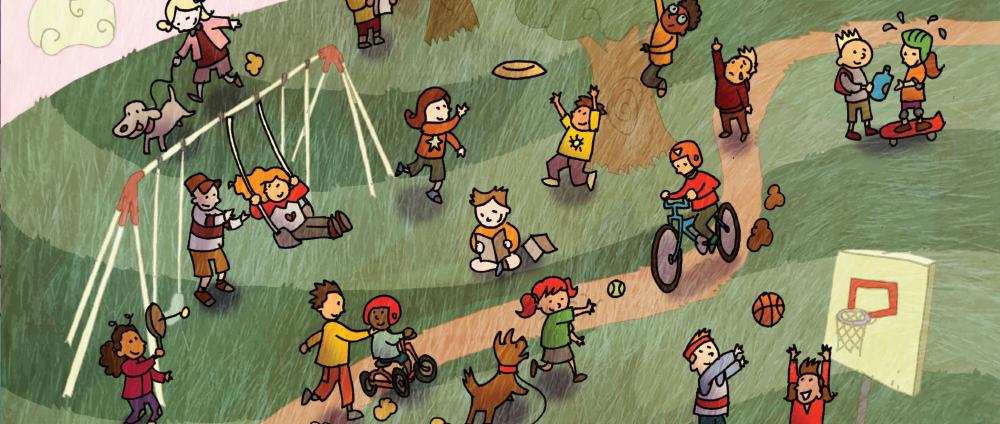
The Good Samaritan
- Tell why we should care for other people.
- Be loving and caring toward others.
- Plan one way to demonstrate love and concern for someone.
Leader Reflection
Because this parable is so well known, most Christians tend to think it's easily understood. That's why it's especially important to spend some time reading and meditating on it before you teach.
Like many other parables, this one is part of a larger story. An expert in the law, that is, the Torah or first five books of the Bible, asks Jesus a question in order to test him. It's not an unusual question to ask a rabbi, but perhaps the legal expert thought Jesus would trip himself up with an unusual answer. "Teacher, what must I do to inherit eternal life?" Cleverly, Jesus turned the question around. "What do you think? How do you read the law?"
The legal expert gave a wonderful answer, one he may even have heard from Jesus, since Jesus often put these two commandments, found in separate passages, alongside each other: loving God above all and loving your neighbor as yourself. Jesus says to the legal expert, "You're exactly right; do this and you will live."
It's important to understand that Jesus is not commending salvation by works. Loving God with all your heart, soul, and strength means that we must put our trust in his love and grace. And living in God's love means we extend that loving relationship to our neighbor.
The expert in the law was not satisfied. Who exactly is my neighbor, he wondered, and how far does that neighborly love extend? At that time, most Jews believed that their neighbor was a fellow Jew, and that was as far as neighborly love should extend.
As usual, rather than preaching a street sermon Jesus told a story---a story of threes. Three people make their way down the steep, dangerous, lonely road from Jerusalem to Jericho. Each of them sees another traveler, stripped, beaten, and unconscious lying beside the road. If the traveler had been clothed, they could have seen whether he was a Jew or not, and if he had been conscious they could have asked him.
The first was a Jewish priest. Not knowing if the wounded person was a Jew or a Gentile, or even if he was dead or alive, the priest passed by, unwilling to risk ritual defilement by touching the man. The Levite did the same, probably for the same reasons.
The listeners probably expected the third traveler to be an ordinary Jew. Instead he was a Samaritan, a member of a group of "half breeds" who were hated and despised by most Jews. The Samaritan becomes the hero of the story. And what is his motivation? Simply that he had compassion for the injured man. This was an act of great mercy beyond all the expectations and requirements of the law.
"Who is my neighbor?" That's the central question of the story, the central question you must ask yourself and the children you teach. Jesus doesn't give a direct answer in the parable, but he points in the direction where we can find it. Our neighbor, wherever that may be, is that person in need to whom we should show mercy and compassion. The identity of the neighbor changes from day to day, even from hour to hour, but the driving force of divine love remains the same. Those who love God also love their neighbor and show that love in concrete acts of care and kindness.
Do you struggle with the question who is my neighbor?
Jesus agrees with the man’s answer that loving God and loving your neighbor is the way to eternal life—“Do this and you will live.” How does this fit with the idea that salvation is by grace alone?
Think about a time you passed by a neighbor in need. Is it possible that religion can get in the way of helping?
This story may be familiar to at least some kids in your class. It’s easy for all of us to identify with the Samaritan as the “good guy” and the three passersby as the “bad guys.” Try to help kids identify also with the passersby, perhaps by using your own experience.
While the parable mainly focuses on loving your neighbor, the entire story links loving God and loving your neighbor. See if you can find ways that help your class understand this linkage concretely, perhaps, again, from your own experience.
Steps
Before the session begins, place a few Band-Aids on yourself in obvious places. If kids ask what happened, tell them that it’s a mystery; they will find out soon! Also print and cut apart the letters of the word COMPASSION and tuck them inside an envelope.

Get Unlimited Access!
Sign up for DWELL Digital to unlock all online leader resources, printable pages and session plans.
Call 800-333-8300 or Request Access
Already a subscriber? Log In
Learn About DWELL
DWELL helps kids find their place in God's Big Story. Learn more about this popular and trusted children’s ministry curriculum.
